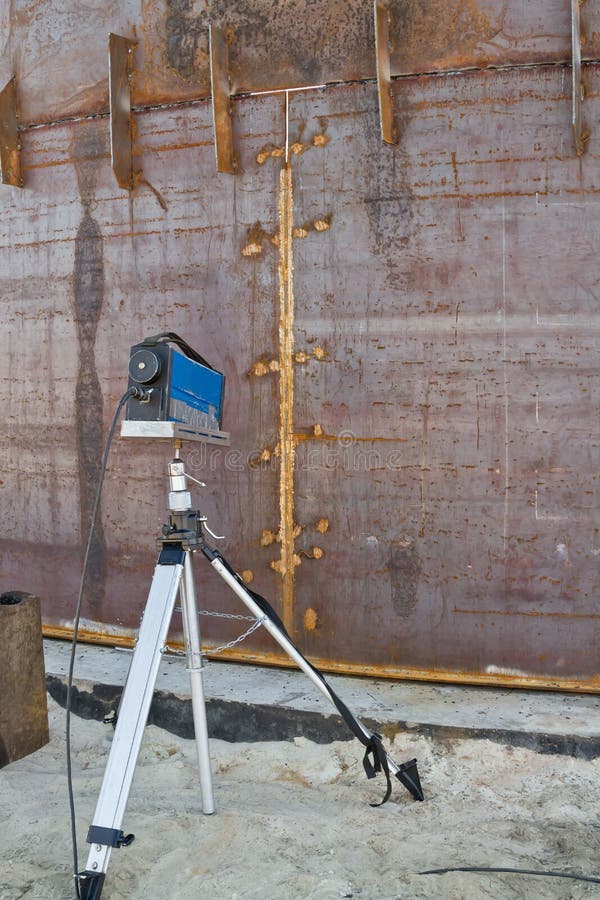The Importance of Specialist Tank Welding Inspection Solutions
The Importance of Specialist Tank Welding Inspection Solutions
Blog Article
A Comprehensive Overview of Container Welding Inspection Requirements and Methodologies for Improved Weld Quality and Efficiency
The importance of welding examination standards in the manufacturing of containers can not be overemphasized, as they function as the backbone for making certain weld integrity and operational integrity. Various assessment techniques, consisting of aesthetic analyses and progressed non-destructive screening methods, are vital in recognizing potential problems that could jeopardize performance. Adhering to regulative requirements not only improves weld high quality however likewise reduces the threat of pricey failures. As we explore the subtleties of these methods, it ends up being essential to consider how a methodical technique can change present methods and cause considerable improvements in outcomes.
Value of Welding Assessment Criteria

Welding evaluation requirements incorporate an array of criteria, including material specifications, welding treatments, and qualifications of employees involved in the welding process. By applying these standards, companies can systematically identify and rectify potential problems, thereby decreasing the chance of expensive repairs or disastrous failings. Moreover, strenuous evaluation techniques foster a culture of liability and accuracy, encouraging welders to preserve high levels of workmanship.

Typical Welding Assessment Techniques


Ultrasonic Checking (UT) is another widespread technique, utilizing high-frequency acoustic waves to discover inner flaws that may not be visible externally. This technique is especially efficient for determining spaces or additions within the weld steel. Magnetic Bit Checking (MT) is additionally extensively made use of, especially for ferromagnetic materials, as it exposes surface and near-surface problems through the application of electromagnetic fields and ferrous particles.
Additionally, Liquid Penetrant Testing (PT) detects surface-breaking defects by using a penetrant to the weld and after that making use of a developer to extract the penetrant. Each of these techniques adds to a comprehensive inspection approach, making certain that welds fulfill the rigid high quality requirements required in tank building and construction.
Governing Specifications and Conformity
Regulatory requirements and conformity are essential components in guaranteeing the security and dependability of bonded structures in tank building and construction - Tank Welding Inspection. These requirements serve to establish minimum needs for material homes, welding treatments, and evaluation techniques, thus decreasing the danger of structural failures and boosting general efficiency
Key organizations, such as the American Society of Mechanical Designers (ASME) and the American Welding Culture (AWS), supply standards that are commonly embraced in the industry. Compliance with these standards not just ensures adherence to ideal practices yet also he has a good point fulfills legal and legal responsibilities, securing the rate of interests of stakeholders.
Regulatory bodies frequently mandate adherence to specific codes, such as ASME Code Area IX for welding credentials and API 650 for welded containers. These codes describe needs for welding techniques, qualifications of personnel, and testing approaches to confirm weld stability.
Regular audits and inspections are essential to preserving compliance, as they aid identify discrepancies from developed criteria. Non-compliance can result in substantial penalties, job hold-ups, and security hazards. Hence, a robust understanding of governing requirements and a commitment to compliance are vital in attaining high-quality and resilient bonded container structures.
Non-Destructive Evaluating Approaches
Exactly how can the honesty of welded frameworks be assured without creating damage? Non-destructive testing (NDT) techniques use a durable option, making it possible for assessors to evaluate weld quality without compromising the material - Tank Welding Inspection. Among the most usual NDT strategies are ultrasonic screening (UT), radiographic screening (RT), magnetic fragment screening (MT), and color penetrant testing (PT)
Radiographic testing entails passing X-rays or gamma rays via the weld, developing images that disclose architectural flaws such as fractures or spaces. This technique is very useful for assessing the stability of complicated welds.
Magnetic particle testing is matched for ferromagnetic products, where magnetic areas expose surface and near-surface suspensions. Dye penetrant testing utilizes a fluid color to highlight surface-breaking imperfections, making it an efficient method for non-porous materials.
Each of these NDT approaches has distinct benefits, my link permitting thorough analyses tailored to details products and welding procedures. By applying these techniques, sectors can make certain the dependability and safety and security of welded frameworks, eventually improving overall efficiency.
Enhancing Weld Quality With Examination
Efficient examination plays a crucial function in boosting weld high quality, acting as an essential checkpoint in the fabrication procedure. By identifying prospective flaws early, assessments mitigate the danger of compromised architectural honesty and make certain compliance with sector standards. Employing a combination of aesthetic assessments, non-destructive screening (NDT) techniques, and mechanical assessments, inspectors can identify problems such as porosity, fractures, and insufficient fusion.
Applying a robust assessment procedure not just boosts the total high quality of welds but likewise fosters a culture of accountability amongst welders and fabricators. Regular training and certification of inspection personnel make certain that they are outfitted with the essential abilities to recognize and deal with prospective troubles effectively. This proactive technique lessens rework and linked costs, eventually adding to forecast performance.
Moreover, thorough documents of evaluation findings offers useful insights right into persisting problems, helping with continual enhancement in welding techniques. By leveraging sophisticated technologies, such as automated ultrasonic screening or digital radiography, weld top quality can be enhanced with extra precise analyses. To conclude, a rigorous assessment process is indispensable in accomplishing top notch welds, making certain security, reliability, and longevity in tank construction.
Final Thought
In verdict, the execution of strenuous container welding inspection criteria and methodologies is important for guaranteeing weld honesty and performance. By using a mix of aesthetic evaluations, non-destructive testing approaches, original site and adherence to governing criteria, companies can efficiently identify and alleviate possible issues.
Report this page